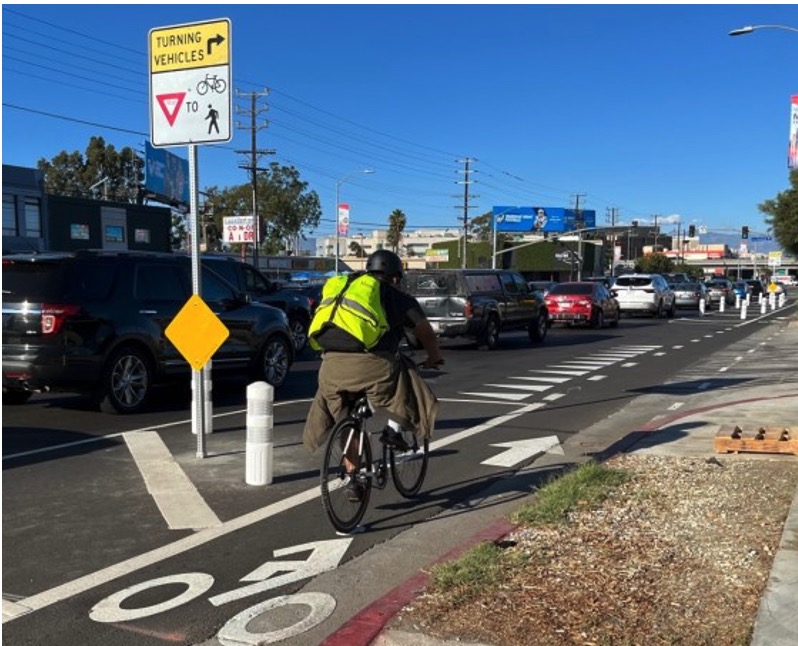Comments
PLANNING WATCH - In a word, NO. When real estate hucksters invoke policies or programs extracted from LA’s old, poorly monitored, but legally required General Plan, they have ulterior motives. To take a deep dive into this misuse, we need to realize that California state law requires all cities and counties to adopt a General Plan. In addition, the City of LA’s municipal code and its voter-adopted City Charter reinforce these State requirements. If adhered to, the City of Los Angeles should, therefore, have an up-to-date and carefully monitored General Plan that addresses the following categories in internally consistent elements (chapters):
- Land Use (LA is divided into 35 Community Plans and 2 District Plans. Only 7 are up-to-date. 17 are slowly being updated, and the remaining 13 do not yet have start dates.)
- Circulation (Called Mobility 2035, it was adopted in 2016.)
- Housing (2022)
- Conservation (2001)
- Open Space (1973)
- Noise (1999)
- Safety (1996). A 2021 draft is still waiting for City Council adoption.
- Environmental Justice (The State Legislature adopted this requirement in 2016, but Los Angeles has not yet prepared this new element.)
- Air Quality (2003)
Optional Los Angeles General Plan elements:
- Health (2016)
- General Plan Framework (1996)
- Infrastructure (1972)
- Public Facilities (1969)
Optional element in State Guidelines:
- Climate Change is presented in California’s 2017 General Plan Guidelines, Chapter 4, as an optional General Plan element
All plans require systematic monitoring to determine if their assumptions are accurate and if their policies have been successfully implemented. In Los Angeles, however, the 1996 General Plan Framework’s monitoring unit was never created. At best, after a gap of 20 years, City Hall submitted several annual monitoring reports to Sacramento. These reports do not, however, assess the General Plan’s underlying assumptions, even though the 1996 Framework element over-estimated LA’s population by 500,000 people.
To illustrate this careless approach, the Framework’s Chapter 9, Infrastructure and Public Services, contains 40 major objectives, which are then divided into 70 implementation programs. Have these objectives been met and have their implementation programs succeeded? The annual monitoring reports that LA’s City Hall submits to Sacramento do not ask or answer these questions. Why? Perhaps because state and local officials realize that adopted planning policies and programs impede the highly profitable real estate projects whose construction usually requires discretionary planning and zoning waivers.
Furthermore, the Framework’s Chapter 9 identified 13 citywide implementation program areas that future Transportation/Mobility elements should address.
How then does LA’s Mobility Element 2035, adopted in 2016, compare to the 1996 General Plan Framework? The Mobility Element’s Action Plan lists 174 implementation programs, yet City Hall’s Annual Monitoring Reports neglected to determine how the General Plan Framework’s 13 transportation goals connected to the Mobility Element. While 39 of its 174 programs deal with bicycling, only three address LA’s bicycle networks. These include Programs ENG 6 and ENG 17. If implemented, they would create the: “Bicycle Enhanced Network, an interconnected bicycle network on 150 miles of bicycle paths and 300 miles of protected bicycle lanes to provide a regional low-stress bicycle system.”
In addition, Program ENG 14, the Neighborhood Enhanced Bicycle Network would establish, ” . . . an 800 mile system of collector and local streets designed to facilitate bicycle and pedestrian activity.” Thirty-six (36) bicycle programs address other aspects of bicycling, such as mounting bike racks on taxis, while the 131 remaining transportation programs focus on non-bicycle transportation modes, such as walking and mass transit.

Recently installed buffered bike lanes on Venice Boulevard.
Clearly, groups such as the Mid-City West Neighborhood Council, which recently adopted a bicycle lane motion I panned in last week’s Planning Watch column, don’t know or care much about LA’s General Plan, much less its Mobility Element 2035. While the Mobility Element proposes a five mile long Fairfax Avenue bicycle lane, from Hollywood to Jefferson Boulevards, it does not single out the isolated ½ mile section in the Neighborhood Council’s motion.
Despite their feigned devotion to LA’s General Plan, they neglected the Mobility Element 2035’s 36 other bicycle programs, as well as its 131 non-bicycle transportation programs. For a group so devoted to the Mobility Element 2035, their only real connection is by coincidence. When an implementation program corresponds to their covert agenda, they hop on board. As for other transportation programs, such as MT 6 and 7, Sidewalk Cleaning and Repair, they could care less. Apparently, he who pays the piper, picks the tune.
(Dick Platkin is a retired Los Angeles city planner who reports on local planning issues for CityWatchLA. He is a board member of United Neighborhoods for Los Angeles (UN4LA).
Previous columns are available at the CityWatchLA archives. Please send questions to [email protected].)
















